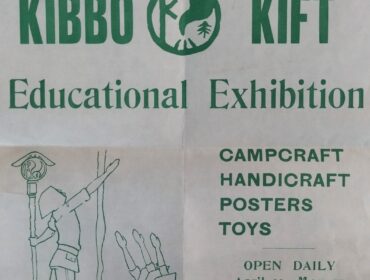The Early Records category covers the documents from when there was no breakdown between Directors’ Papers, Exhibition Files, and Educational Files. The earlier folders date back to before 1901 when the present-day building was opened, and the later ones to 1947. They contain all kinds of paper records, including catalogues, posters, correspondence with artists and lenders by the Director, Trustees, and curators, the secretaries’ diaries, checklists, financial documents, and so on.
To see an image in full, press the left button on the mouse. To see its details, press the right button, select “Open link in a new tab”, and zoom in.
You can see the relevant Catalogue of the Archive Holdings here.

William Michael Rossetti (1829-1919) was an English writer and critic, brother of Dante Gabriel Rossetti, one of the seven founding members of the Pre-Raphaelite Brotherhood in 1848. In this letter he discussed the lecture that Charles Aitken, the Gallery Director of the time, would give at Toynbee Hall. EAR/4/1.

EAR/4/13. Chief Rabbi from Maida Vale thanks the Gallery Director for fascilitating the sale to the National Gallery of painting by William Rothenstein 'Jews Mourning in Synagogue’.

Among other things, secretary Hartery asks the director for "kitchen coals," which is an excellent example of documentation of everyday life in the gallery. EAR/2/18A

EAR/1/18A. In continuation of the letter of 24 January 1913, available online in our Historical Documents section, to fight the threat from Suffragettes, the Police recommend arranging in all museums a place for muffs and parcels.

EAR/2/36. Kibbo Kift, a popular movement uniting elements of boy-scouting, crafts, and folklore magic, also used extreme political symbols.

EAR/2/36.The first letter from the artist, in which he tries to organize an exhibition of his works.

The donation letter, EAR 1/1/1. Sir Edgar Speyer financed two London Underground lines and Scott's Antarctic expedition.
Because of anti-German and anti-Semitic sentiments in Britain during World War I, he scandalously moved to the United States.

EAR 1/2. One letter from a large correspondence between Passmore Edwards and Barnett “on the question of name” for the Whitechapel Gallery. It could have been called the "Passmore Edwards Gallery". Passmore Edwards was the main sponsor. Because of their quarrel, Barnett was forced to seek other sponsors. Until recently, the neighboring building was called the Passmore Library.

Notes on Oriental Rugs by John Kimberly Mumford for the ‘Muhammadan Art and Life’ exhibition. EAR/4/29

Request to use the gallery for Jewish prayers for the New Year, 1913. EAR/2/18A.

EAR/2/32. Archival documents from the 1920s well illustrate the political history. Irish republican party Sinn Fein, closely associated with the IRA, threatens the Whitechapel here. In the same year 1921 it finished the Irish War of Independence by signing the treary with the British.

EAR/2/32. Herbert Morrison, the long-time senior Labour politician, signed the proposal. In 1922 Labour became the official opposition for the first time, and in 1924 the first Labour government was formed.